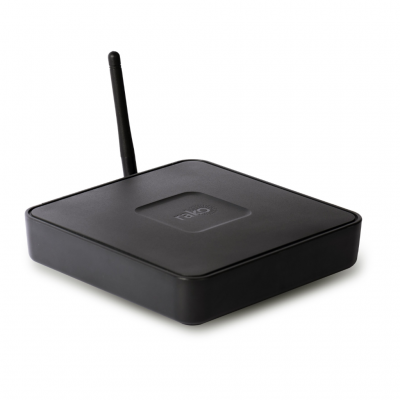Residential Bedroom Lighting Design
Bedroom lighting can have a significant impact on the overall atmosphere and comfort of a space. As such, it is crucial to carefully consider lighting design when creating your ideal bedroom environment. In this comprehensive guide, we’ll explore various aspects of bedroom lighting design in the UK and discuss how various factors, such as light types, colours, and brightness levels, can influence the sleep and relaxation quality within your bedroom.
Different Types of Lighting and Their Use in Bedroom Design
There are primarily three types of lighting that can be used in bedrooms to achieve a balanced and functional design: ambient, task, and accent lighting.
Ambient Lighting
This refers to the general illumination in a room, which should provide a comfortable level of brightness without causing any glare or eye strain. You can achieve this by using diffused light sources, such as ceiling lights with soft shades, flush mounts, or pendant lights.
Task Lighting
Task lighting is used to provide focused illumination on specific areas where activities will take place, such as reading or working on a computer. For bedrooms, you can use bedside table lamps, adjustable wall-mounted lights, or floor lamps to deliver adequate task lighting.
Accent Lighting
Accent lighting is used to highlight specific design features or create interesting focal points. In a bedroom, this may include adding wall sconces or floor lamps that direct light onto artwork, architectural features, or a textured wall.
Lighting and Sleep in Residential Bedrooms
The type of lighting and its colour can significantly impact sleep quality. White and blue lights, often associated with energy-efficient LED bulbs, can suppress melatonin production—the hormone responsible for regulating sleep. Conversely, red-toned lights or dimmable warm lights can help the body ease into its natural sleep cycle.
For a comfortable and sleep-conducive bedroom environment in the UK, consider using adjustable, dimmable lights or install smart bulbs that can gradually shift the light colour temperature from cooler tones during the day to warmer tones in the evening.
Lighting Design Considerations for Different Sized Bedrooms
Depending on the size of your bedroom, you’ll want to adjust your lighting design to match. Here are some tips for various room sizes.
Small Bedrooms
In smaller bedrooms, wall-hung lights such as sconces, swing-arm lamps, or other space-saving solutions are ideal as they provide ample lighting without taking up valuable floor or surface space.
Larger Bedrooms
Larger bedrooms can benefit from a mix of ambient, task, and accent lighting. This might include using a combination of ceiling lights, floor-standing lamps, and wall-mounted fixtures to create a balanced and well-lit environment.
Balancing Functionality and Relaxation:
Both the adequacy of illumination and the relaxation factor must be considered when selecting a brightness level. Adjustable brightness levels, often provided by dimmer switches, can help achieve the perfect balance between functionality and relaxation. During the day, you can increase brightness for tasks, while lowering it in the evening for a soothing atmosphere.
Influences of Lighting Colours on Mood and Ambiance
Different colours of lighting can affect the overall mood and ambiance of a bedroom, with warm tones creating a cozy and relaxing atmosphere, while cooler tones can provide a more alert and focused environment.
Yellow Bulbs
Using yellow-hued bulbs can promote a sense of warmth, comfort, and relaxation in the bedroom. This is particularly beneficial for those who struggle with winding down in the evening.
Blue/White Bulbs
Although blue or white lighting might appear more modern and visually appealing, these cooler tones can inhibit sleep by suppressing melatonin production. When creating a sleep-friendly bedroom lighting design, opt for warmer-toned bulbs instead.
Ceiling Lighting: Choosing the Right Option for Bedrooms
Ceiling lighting can serve several purposes, from providing general illumination to adding a decorative focal point. To choose the right ceiling light for your UK bedroom, consider the height of your ceiling and evaluate how well the fixture can diffuse soft, warm light.
Low-ceiling Rooms
For rooms with a low ceiling, flush mounts or semi-flush mounts are suitable options that provide sufficient lighting without compromising headroom.
Spotlighting in Bedroom Lighting Design
Spotlights—either mounted on the ceiling or as standing or wall-mounted lamps—are another versatile option for bedroom lighting. They can be used to create focused task lighting, accentuate design features, or provide additional ambient lighting as needed.
Residential Bedroom Lighting Design FAQs
What type of lighting is best for bedrooms?
A combination of ambient, task, and accent lighting is ideal for creating a well-balanced and functional bedroom environment. Ensure you choose warm-toned bulbs and dimmable options to promote relaxation and better sleep.
How do you guide lighting in a bedroom?
For optimal lighting, consider the room layout, identify areas that require specific lighting (such as a reading nook or dressing area), and strive for an even distribution of light throughout the space. Mix and match various types of fixtures to achieve a cohesive and functional lighting scheme.
Where should ceiling lights be placed in a bedroom?
Ceiling light placement depends on the room’s size and layout. Generally, central placement is advised to ensure even illumination throughout the room. However, additional ceiling lights can be placed above specific areas, such as a seating or dressing area, if needed.
Lighting Controls for Enhanced Mood and Comfort
Implementing lighting controls in your UK residential bedroom can provide added versatility and customization, allowing you to create the perfect atmosphere for various activities or simply achieve more detailed mood lighting. Options such as dimmers, remote controls, and smart device apps can help you effortlessly manage your bedroom’s ambiance, enhancing the overall experience.
Light Dimming
Dimmable light switches give you the ability to adjust your bedroom’s brightness level to your desired intensity. By incorporating light dimming into your lighting design, you can create a comfortable space for relaxation and better sleep while still being able to increase brightness for tasks like reading. Dimmers can be installed as wall-mounted switches for easy access or integrated into individual light fixtures.
Remote Lighting Control
Remote-controlled lighting allows you to adjust your bedroom lighting without having to leave the comfort of your bed. With this option, you can easily switch between various light sources, such as turning off the main ceiling light while activating bedside lamps, ultimately helping you create a welcoming and comfortable environment tailored to your needs.
Lighting App Control
Smart device applications that connect to compatible light bulbs or fixtures provide ultimate control over bedroom lighting. These apps give you the ability to adjust brightness levels and often even the colour temperature or hue of the bulbs, creating mood lighting that can be customized to your preferences. Some smart lighting apps also offer automation and scheduling features, allowing you to wake up to gradually increasing light intensity in the morning or automatically dimming your lights in the evening, promoting a natural sleep cycle.
By combining various lighting controls, such as dimmers, remote controls, and app-based access, you can create a bedroom lighting experience that is flexible, user-friendly, and adapts to your unique needs and preferences. Embrace these advances in technology to turn your UK residential bedroom into a haven for relaxation and rejuvenation tailored to your preferences.
In conclusion, UK residential bedroom lighting design is a complex subject but can be navigated by understanding the different types of lighting available and considering factors such as light colour, brightness levels, and room size. Create a well-balanced and functional space by combining ambient, task, and accent lighting, while staying mindful of the impact of lighting on sleep quality. With these tips, you’ll be on your way to crafting a beautifully lit and comfortable UK bedroom environment.
FAQs
What are the different types of lighting used in bedroom design?
There are primarily three types of lighting used in bedrooms: ambient, task, and accent lighting. Ambient lighting provides general illumination, task lighting focuses on specific areas for activities like reading, and accent lighting highlights specific design features or creates interesting focal points.
How does the type and colour of lighting affect sleep quality?
The type and colour of lighting can significantly impact sleep quality. White and blue lights can suppress melatonin production, which regulates sleep. On the other hand, red-toned lights or dimmable warm lights can help the body ease into its natural sleep cycle.
How should lighting design be adjusted for different sized bedrooms?
In smaller bedrooms, wall-hung lights are ideal as they provide ample lighting without taking up valuable floor or surface space. Larger bedrooms can benefit from a mix of ambient, task, and accent lighting to create a balanced and well-lit environment.
How do lighting controls enhance mood and comfort in a bedroom?
Lighting controls like dimmers, remote controls, and smart device apps provide added versatility and customization, allowing you to create the perfect atmosphere for various activities or achieve more detailed mood lighting.
What is the role of a professional UK residential lighting designer?
A professional UK residential lighting designer is responsible for designing, creating, and implementing comprehensive lighting control systems tailored to the specific needs of the homeowner. They ensure the system is functional, energy-efficient, aesthetically appealing, and complements the homeowner’s lifestyle.

Rako Lighting Controls Systems

Rako Keypads

Rako Dimmers

